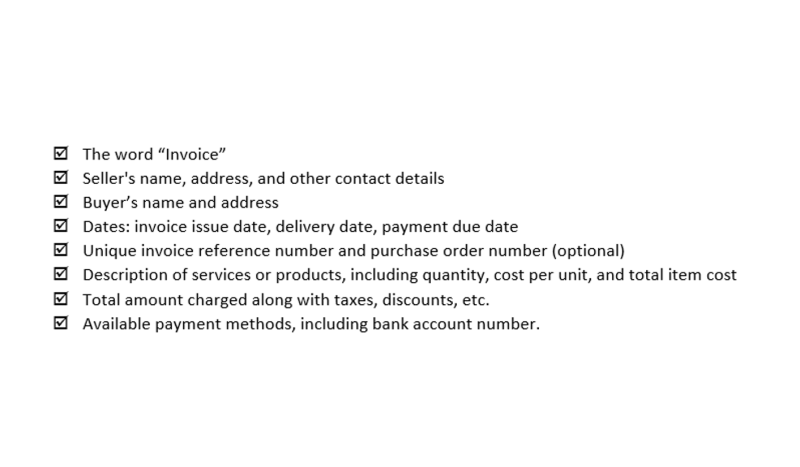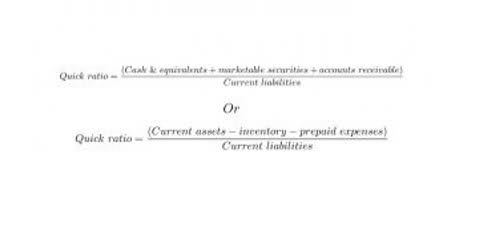
The financing company may advance around 80-90% of the invoice value upfront, minus a fee (discount rate), and hold the remaining amount as a reserve. Once the client pays the invoice, the financing company releases the reserve amount to the business, invoice financing minus any fees or charges. Impact on your credit may vary, as credit scores are independently determined by credit bureaus based on a number of factors including the financial decisions you make with other financial services organizations.
What is accounts payable automation software?
In short, Terry agreed to be paid a total of $19,600 instead of $20,000 in exchange for receiving most of his money right away, which helped him pay the crew who worked on the job. It is one of the most common questions we get asked at bankersfactoring.com, and it is a good question. Many or all of the products featured here are from our partners who compensate us.

Ford vs. GM Stock: Which Is a Better Way to Make Money?
- Invoice financing is a form of asset-based financing in which you receive an advance of capital for your unpaid invoices.
- With invoice financing, lenders advance a percentage of your unpaid invoice amount — potentially as much as 90%.
- Instead of getting payments from your customers, you’ll get your money from a lender almost immediately.
- New or small businesses might not qualify for traditional bank loans due to a lack of credit history or collateral.
- To qualify for invoice financing, you should have creditworthy customers who have a history of paying on time.
- The business remains responsible for collecting the invoice balance, and once an invoice is paid, the business repays the loan.
You can have all the software comparison guides in the world available to you, but if you aren’t intentional about your decision, you may end up choosing software that falls short for your needs. Here are a few steps you can take to help https://www.bookstime.com/ you make the right decision when selecting an accounts payable platform for your small business. As your small business grows, manually managing accounts payable (AP) processes becomes more challenging, time-consuming and error-prone.
Should My Business Factor Invoices or Use Invoice Financing?
- Startups and fast-growing companies pick us repeatedly to make their business grow.
- With their “quiet” credit check process that does not affect business credit scores, it promises your business will not be on the hook for open invoices.
- Ultimately, even if you need to supplement a business credit card with another financing method, it’s always helpful to utilize one of these products.
- Businesses should consider the total cost of each option, the impact on cash flow, and the potential for growth that each type of financing can offer.
- With non-recourse factoring, you’re not completely on the hook to pay back the loan if the customers fail to pay the invoices.
Bankers Factoring buys your invoices at a slight discount and provides an initial cash advance of up to 93% of your Accounts Receivable’s value. Selling invoices prevents your business from waiting for customers to pay on their extended credit terms. With tiered fee structures (aka variable fee structures), factors will discount a small percentage of the invoice for as long as it is outstanding. This means that if your invoice goes unpaid after a certain duration, you’ll accrue more fees over time, depending on how overdue they are. Spot Factoring is the perfect option if you need to factor a single invoice and are not interested in long-term contracts.
Invoice factoring is another form of invoice financing in which companies sell their unpaid invoices to the factoring company, which is then responsible for collecting payment from customers. When businesses sell products or services, they often extend credit to customers such as retailers or wholesalers. Companies cannot access the funds they are owed until customers pay their invoices, which can lead to cash flow problems. Companies can use invoice financing to receive an advance of capital based on their unpaid invoices.
- With many small businesses reporting daily incomes barely exceeding expenses, it’s obvious that maintaining positive cash flow is an ongoing struggle across various industries.
- Counteracting cash flow problems through invoice factoring is vital to the survival of your business.
- They can provide expert guidance on the types of insurance products that would best suit your family’s needs and help develop a customized plan that considers both current and future financial scenarios.
- Triumph Business Capital offers invoice factoring for freight brokers and a range of other trucking companies, including everything from owner-operators and mid-sized fleets to larger operations.
- But if you qualify for other types of financing, you should explore those since borrowing costs are likely to be lower with other options.
- Users can take photos of receipts and instantly upload them via a mobile app, and the platform automatically fills in date, amount and VAT.

In most cases an accounts receivable line of credit is like traditional invoice financing (as opposed to factoring), in which you retain ownership of your invoices and are responsible for collecting customer payments. The invoice financing solution you use will determine the level of risk. As with any type of debt, if your client doesn’t pay the invoice, you may be required to repay the advance or loan you received. Signing a long-term contract with a factoring company is a practical way to improve cash flow. To maximize the benefits of invoice financing, though, you need to choose the right factoring company that offers invoice discounting deals (such as a discount rate). In the past, certain forms of invoice financing, such as invoice factoring, have gotten a bad rap due to shady marketing tactics and restricting contracts.
Consider whether there are provisions for high cancellation fees in a long-term contract that may require you to factor a certain number of invoices each year beforehand. Flat-rate fees are generally higher than variable fee structures, but they offer the same rate no matter how overdue your invoice is. The face value of an invoice is multiplied by a flat rate to calculate the flat fee. For example, if the factoring fee is 2 percent and the invoice amount is $10,000, the charge would be $200. We spend hours researching and evaluating each business loan and funding product that we review at Merchant Maverick, placing special emphasis on key characteristics to generate our ratings.
- This is different from many business financing products, which are structured as term loans—meaning you receive a lump sum of capital that you pay back, with interest, over time.
- Spend management software is a platform or tool that helps businesses manage and control their expenses.
- It’s also important to note that flat fee structures are more commonly used for businesses in the transportation industry for ease of accounting.
- Factoring companies can help businesses meet cash flow needs while awaiting payment from customers.
- Juni helps businesses in digital commerce manage their cash flow, track their expenses and optimise their profits with features that are specifically designed with ecommerce companies in mind.
Venture Capital





